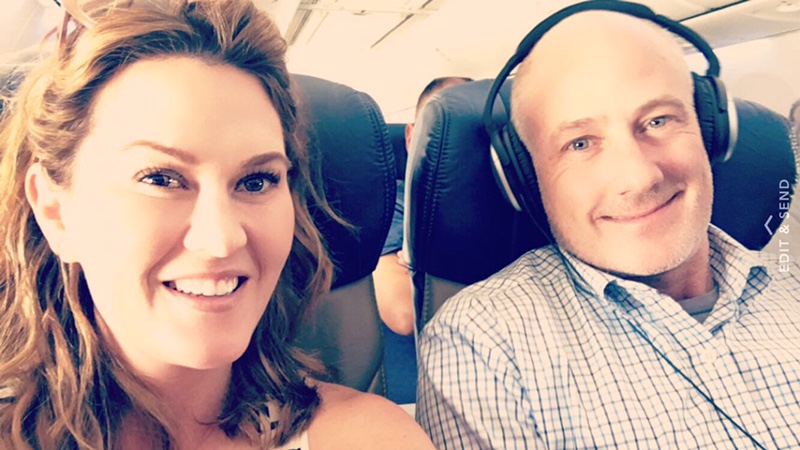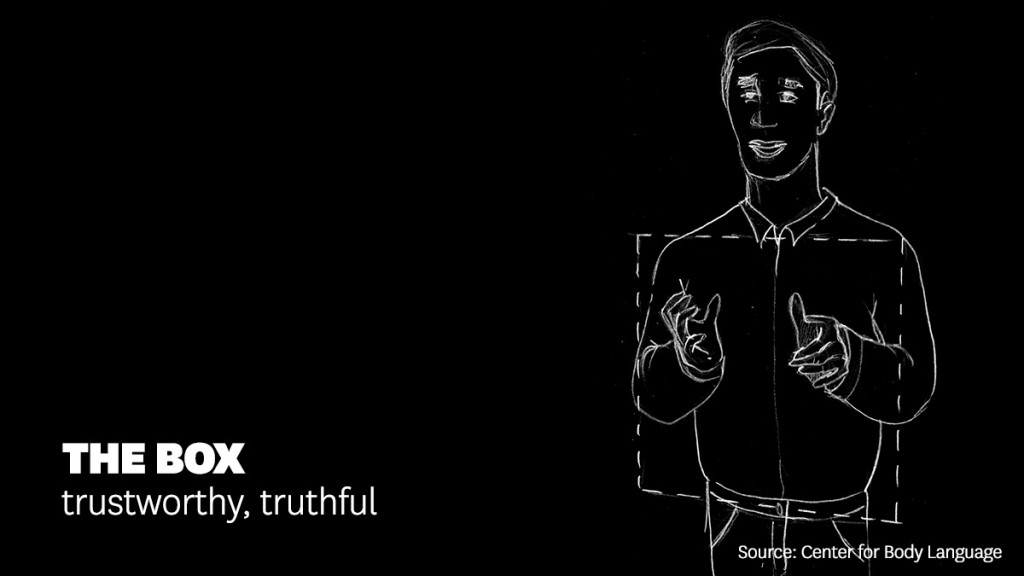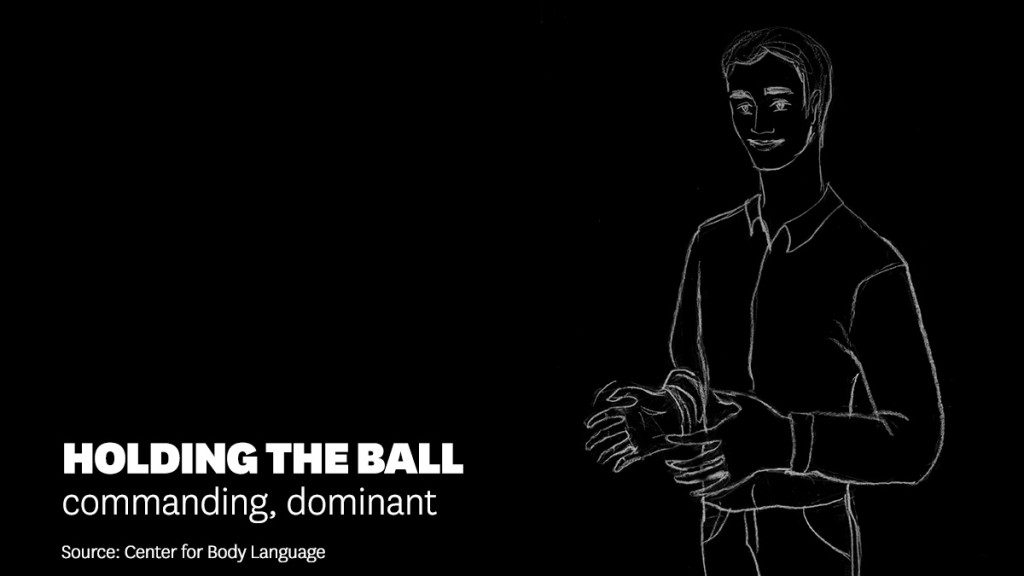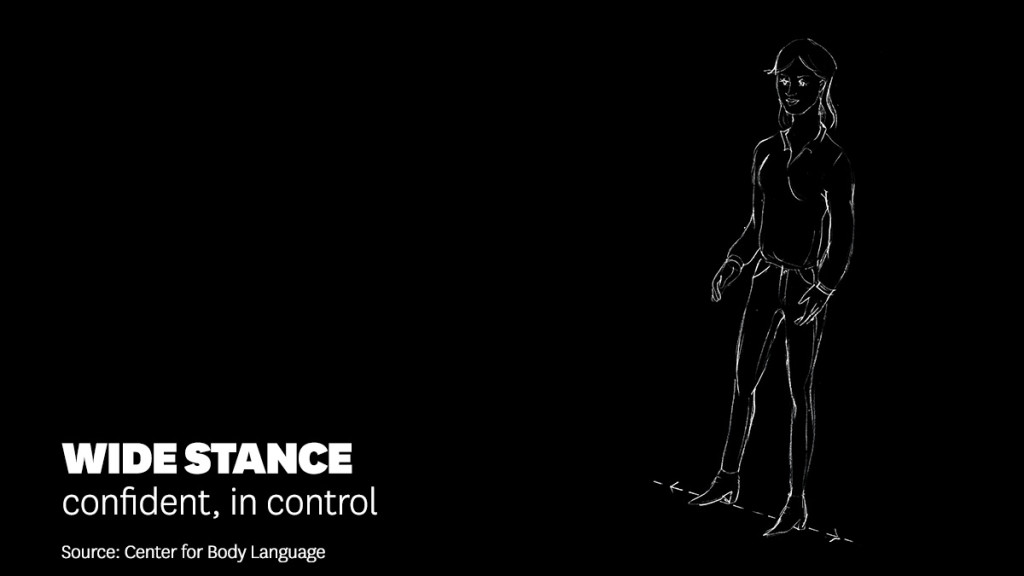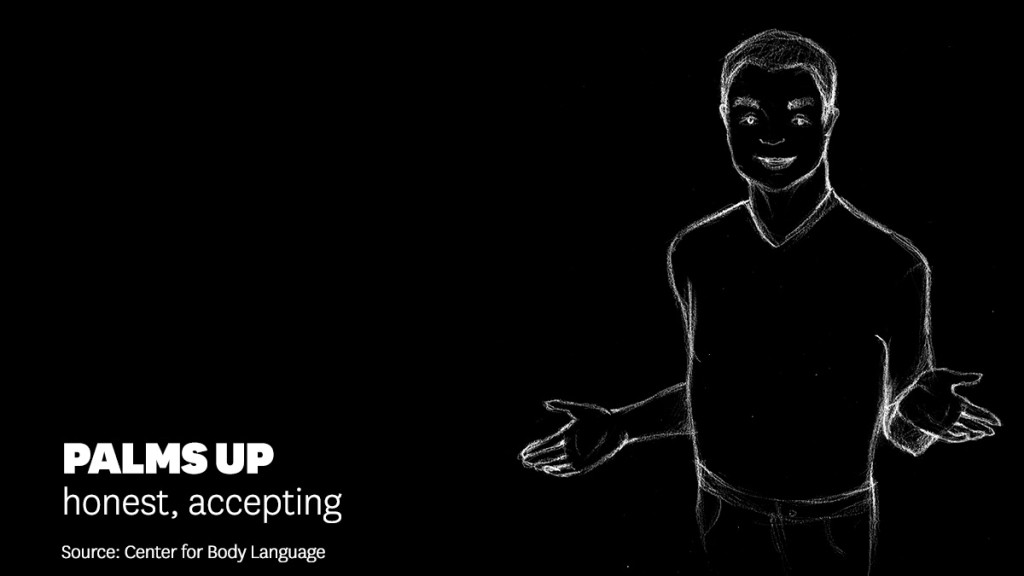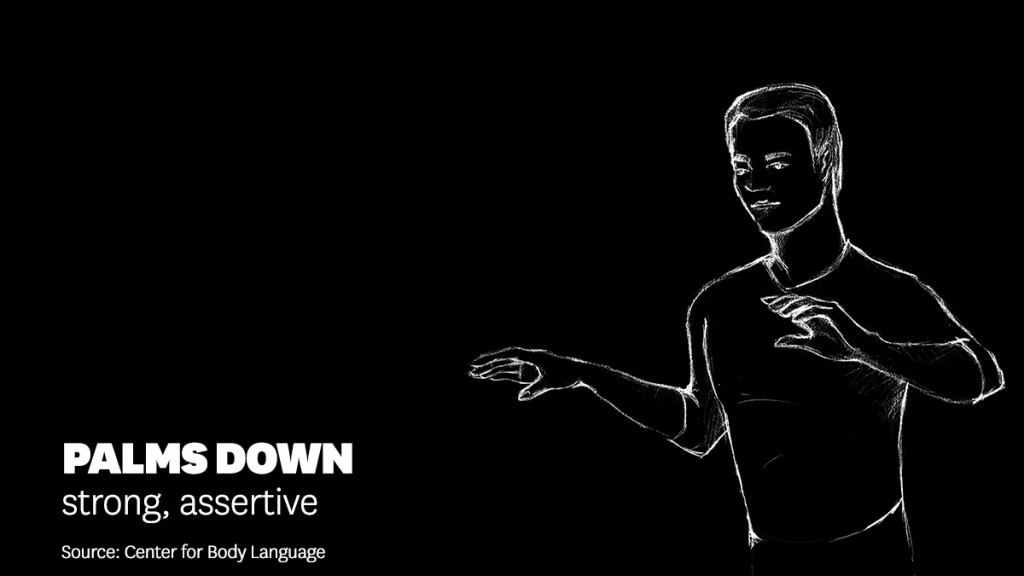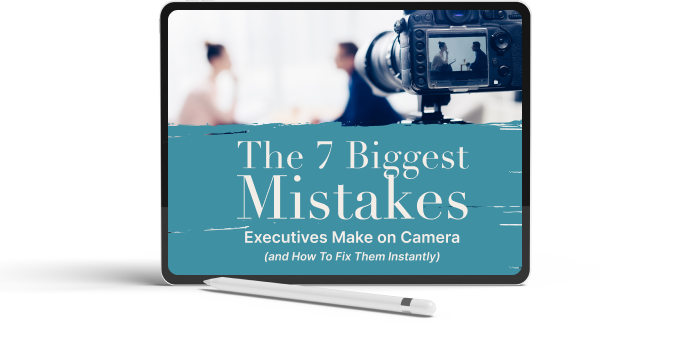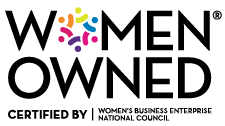| The Peloton crisis got me thinking…
What if something terrible happened to you? Every organization is vulnerable to a crisis. On many levels. If you ignore it – it doesn’t disappear. An employee sends out a racist tweet. You lay off workers. Your CEO gets in a car crash. There’s video of an employee doing something illegal. Or your product kills someone in a popular TV show. Maybe it’s not even your crisis – but a vendor or client of yours is having a crisis. The media calls. You need to answer them. And release an internal statement, or even better, a video. You don’t know what to do or say. There are three rules for crisis management to remember:
The good news is, this is easier if you prepare. So how do you prepare for the unexpected?
The basic steps of effective crisis communications are not difficult, but they require work in order to minimize the damage. The impact on your financial and reputation’s bottom line will be more severe if you do not plan. Employees and other stakeholders won’t know what’s happening and will become confused and angry. Your organization will be perceived as inept and possibly criminally negligent. The media crisis will last MUCH longer. Preparedness is KEY. |
|
|
|
|
|
P.S. I just gave you a brief rundown of what to do in a crisis, but if you are really serious about crisis preparedness, check out this video where I go into more detail. P.P.S. I’ve created a special program just for healthcare professionals who need media training so they can confidently show up on camera, attract more patients, move up in their careers, and let their expertise shine. If that is you or you know someone who can benefit from this, Learn More Here. P.P.P.S. Whenever you’re ready… here are 3 more ways I can help you build your brand, own your voice, and stand out:
|
media coach
How to Land Your Company on the Today Show’s Website
People always ask me…
How do I get on TV?
How do I get my company mentioned in articles?
I know media mentions help my SEO, so how do I get legit ones?
I landed the first spot in an article on the Today Show’s website this week and thought I would share how I did it – with you.
How did I do it?
I’ve built relationships with many journalists because I’ve worked with many of them as a journalist… and some, I built organically by giving them valuable information that helps them with their work.
I follow them and keep my eye on what they are searching for.
I respond within minutes.
I only give them exactly what they want and how they want it delivered.
Here’s why this week’s placement worked:
Aly Walansky was looking for last-minute help on a National Cookie Day article she was writing that morning.
She specifically said she needed help now because she was posting her article that morning.
I reached out to Kerry Brown, the co-founder of eat G.A.N.G.S.T.E.R. (they make my favorite cookie mixes).
She responded within MINUTES with exactly what I needed.
I sent it to Aly seconds later.
BOOM, the next day, eat G.A.N.G.S.T.E.R. was the top placement of Aly’s TodayShow.com article.
When you break it all down, it’s about two things:
1: Relationships
2: Speaking to the reporter where they are & how they want to be communicated with
#1 Relationships
I have relationships with reporters worldwide because I’ve worked with them side by side as a journalist… and guess what?
Reporters are people.
Just whipping off a press release to hundreds of emails doesn’t land you in the media.
Reporters receive hundreds of emails a day.
Do they know your name?
Do they trust you to have their back? (i.e. know what a good story is and not waste their time)
#2 Speak to the person where they are and how they want to be spoken to
Doesn’t this work for every relationship?
It works with reporters too (of course, because they are human beings).
I teach this in my media and public speaking training.
We need to give the reporter the information they need and the way they want to receive it.
When I present to big groups on media training, I’m always asked:
How do I send my information to the reporter?
How do they want images?’
How do they want video?
Even if you don’t have the exact answers, always ask yourself: what will make their job and day easier?
Here are some tips right from Aly Walansky, freelance food and travel journalist with Food Network, TODAY Show, Forbes, All Recipes, PopSugar, Men’s Health Magazine, Your Tango and Men’s Journal.
1: Label your pictures. Do not send images attached to an email with names like “image01” or “screenshot12.” This is especially true if you are sending a batch of images for various things at once. It’s also a great way of me using the wrong image for the wrong expert/product/menu item. It’s super helpful if your image file name in some way describes what is inside. For example, if you are sending me an image of an XYZ brand serrated knife, you may want to title that image XYZ-serrated-knife.jpg.”
2: Please don’t send me giant galleries of images and tell me that the image of that one specific dish or cocktail or product is “somewhere in there.” That too increases the possibility of me not finding it, or choosing the wrong one and then you needing to ask me to switch it out later.
3: If I do a call for pitches (like the ones below) and mention that something needs an image to be considered, please don’t skip that. I got tons of great cocktail pitches yesterday for the dessert cocktail story, but a good 20% did not include a needed element (the image, in most cases.)
4: I’m FULLY OK with you sending an image as a dropbox link or a google drive link instead of an attachment, and my inbox actually prefers it. Just make sure you do the aforementioned file-identifying so we’re all on the same page and there’s no confusion.
Aly Walansky has a newsletter you can sign up for if you want to know what kinds of stories she’s writing each day – and what companies she’s looking to feature. More and more freelance writers are doing this now. This is part of the work in building the relationships between you and the reporters you would like to work with… or you’re targeting. Find out how THEY like to communicate and talk to them there.
Could be Twitter. Lots of reporters search for experts there.
Find out where your favorite reporters hang out.
This is a lot like dating, right??
Go where they hang out. Go where they are comfortable communicating.
Do not make them uncomfortable by DMing them if they say they do not respond to DMs. But do they tweet publicly? Great! Then, tweet them.
Do they have a substack newsletter? Great! Sign up for it. And then follow the rules that they’ve outlined in their newsletter regarding how they like to take pitches.
This is so important.
Like dating, we do not cross the lines — or you won’t get that second date. I.e. Don’t show up in person at her work with flowers after the first date.
But you can send cookies to her house and tell her she’s sweet 🙂
Extra points if you know she has food nut and gluten allergies and you send these.
I hope this approach helps next time you are trying to get an article or TV placement, as it has for me and many of my clients in the past.
P.S. Here’s the link to those awesome G.A.N.G.S.T.E.R. cookie, cupcake and cake mixes if you want to get in on the National Cookie Day celebration this Saturday, December 4th…
How to look your best on video conference calls
People around the world are finding themselves working and conducting media interviews from home for the first time.
The COVID-19 pandemic is forcing many to move their in-person meetings to video conferencing on platforms like Zoom, Skype, Google Hangouts and GoToMeeting. It’s also changing the media landscape. Interviews that used to be done from a studio are now being shot in experts’ living rooms, offices and kitchens.
As a media and public speaking trainer, I teach executives who need to do interviews on TV stations worldwide through video conferencing and who need to reach other live audiences through their computer screen. During my executive coaching sessions, I show them how to represent their business and themselves professionally and also make sure their message sticks with their audiences.
You can make a good impression through video conferencing platforms as long as you have a few specific things in place.
Create a background that isn’t distracting
The key to speaking on stage, in the media, in your videos, during live video conferencing and in job interviews is to keep the audience focused on your message and nothing else. Take a look at the wall or space behind you and make sure nothing behind you is distracting. Look for light switches, outlets, open doors, open windows, and anything else that could be distracting. You want people to remember your content and message, and if there’s a very obvious picture or book behind you that grabs the viewers focus — remove it. You don’t want anything in the background distract from your message, or worse, offend your audience.
Good lighting is your best friend
When you are selling your company, your brand, a product or service – you want to be seen in the best light. Literally and figuratively. When you show up in a media interview or in a meeting and you are poorly lit or there are lots of shadows on your face, the audience can subconsciously feel like you’re hiding something. That you can’t be trusted. The majority of your message is your physical content. This is why what you do and your appearance is just as important, if not more, that what you say. Lighting is vital to the way you appear on the screen. Make sure there are no windows behind you. The lighting needs to be in front of you. Natural light from a window is the best. If you don’t have a room that works for this, use soft lighting from a lamp and place it right in front of you without creating shadows from your monitor or phone. I’ve used this light from Amazon for years. It’s under $100 and many of my clients use it for their media interviews.
Make eye contact with the camera
Just like in person, you want to make great eye contact with your audience. When you’re video conferencing, this can be tough. The software will show you speaking on your monitor, along with the person interviewing you – or all the people you’re talking to on the call. This can create a lot of distractions for you. The key here is to make sure when you are talking, you look into the camera on your computer or phone. When you look directly into the camera, you will be appearing as if you’re looking right into the eyes of your audience. This takes practice to get it down and not let your eyes wander off and look at all the other people on the call. Why is this so important? When you let your eyes move from person to person or somewhere else in your room, you may appear to be insincere, detached, uninterested, insecure and even shifty. Make time to practice good eye contact. You do not want to portray the message that you don’t care about the meeting or interview.
Be camera ready
Working from home means you may not have to put a lot of focus on what you’re wearing on your lower half, but you need to make sure that from waist up, you’re all business. Take the time before an on camera meeting to do your hair, makeup and wear something that is not too distracting. For on camera media interviews through video conferencing, my clients normally have their makeup and hair professionally done. During a pandemic, you can’t hire someone to come to your house to get that done. There are many consultants who can talk you through this virtually right now. Our team of makeup and hair stylists is doing this for our clients. If you don’t have a professional to help you, make sure you look well-rested, alert, your skin looks healthy and your best features are emphasized. Since you want your audience to lock-in with your eyes and trust you – make sure your eyes are not blocked by extra hair and eyeglass frames that don’t fit your face properly. A lot of professionals are balancing children at home and working — so both men and women can benefit from a little concealer under their eyes. Make sure your hair isn’t distracting and falling into your face during your calls and try not to adjust your hair or touch your face while you’re on camera. When it comes to wardrobe, it’s better to wear a solid color or something that’s not as distracting. If you have a bold or quirky personality and you love bright colors and patterns, it’s okay to be yourself, just make sure you don’t distract from the conversation.
Position the camera at eye level
Before you jump on a call, make sure the audience will not be looking up your nose or at your ceiling. We’ve seen a lot of these kinds of calls and interviews! Make sure you’re going to appear to your audience at the angle they’re used to seeing you from across a table. Adjust your computer so it’s at eye level by adding books or something else to raise the computer up a little. Sit upright, in the front half of your chair, and look alert. Do not swivel. Again, you want to pretend like you’re making eye contact with the people on your video conference, so make sure you adjust your computer accordingly so you can look right into the camera when you’re speaking.
Be heard! (and sometimes silent)
If you’re in a virtual meeting with a lot of other people, mute yourself when you’re not talking. You may have kids and/or pets at home right now and a spouse working from home. This is the time to learn how to effectively mute yourself when you’re not talking so the speaker is heard clearly. Also, make sure you shut off your notifications. You don’t want to hear your computer or phone dinging throughout. You also could be taking notes during the call, and you don’t want the sound of your fingers tapping away to distract the others.
Working from home also means creating barriers between your home and the “office.” Make sure to create a good system that will keep you happy, successful and sane during this (hopefully) short period of time where most of us need to work from home.
- Sleep at least eight hours a night. Working from home can create some unhealthy habits like working at all hours of the day/night. Make sure you are getting your personal time to recharge and you’re sleeping. Showing up as your best during video calls and media interviews online while you’re not rested can be a big gamble. You need to be able to answer questions thoughtfully and think quickly. You need sleep for optimal brain function.
- Shower every single day. Start your day with a shower and do your normal morning and evening routines. This will keep you alert and productive. Plus, you need to look good on camera!
- Create 10-15 minute breaks between large blocks of meetings. Stretch, go to the bathroom and eat. You cannot show up looking healthy, trustworthy and likeable on camera if you’re dehydrated, are not sleeping, and you’re hungry.
While working remotely might be a bit of an adjustment, we’re here to help you feel confident and make sure your message sticks with your audience and makes them ACT.
How to avoid the mistake the White House made this week
Picture courtesy of NBC News
I send out an email almost daily that goes to clients, former clients and future clients.
On Sunday, I sent a media tip that many would say is obvious.
Kind of a “no duh.”
I even called it “unsexy.”
But au contraire, my friend…
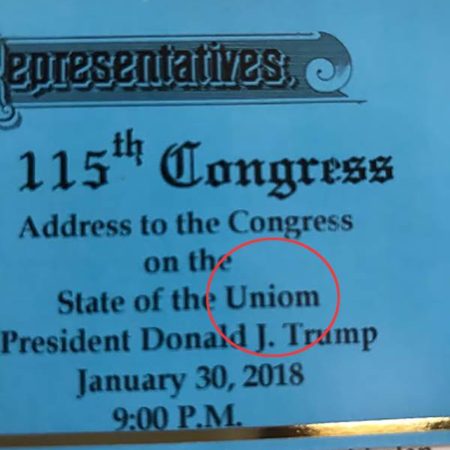
I’m sure you’ve heard by now that tickets to President Donald J. Trump’s first State of the Union address originally said State of the “Uniom.”
The tickets issued to lawmakers’ spouses and guests contained the typo. The tickets were printed by the Office of the Sergeant at Arms and Doorkeeper. They had to be reissued.
“It was corrected immediately, and our office is redistributing the tickets,” a spokesman for the sergeant at arms told Agence France-Presse.
One news outlet reported that the State of the Union tickets actually had two typos: In addition to “Uniom,” they referred to the “Visitor’s Gallery.” It’s actually the Visitors’ Gallery.
This isn’t the first time. Not long after President Trump was sworn into office in January of last year, the White House misspelled British Prime Minister Theresa May’s name—three times. THREE times. Her name is “Theresa” May, but they spelled it “Teresa” May. “Teresa” (with no h) May, happens to be a model and porn actress.
The original version of Trump’s presidential inauguration poster also featured a typo. The message over his photo read “No dream is too big, no challenge is to great,” with the second “o” missing from the second “too.”
Then there was the time the White House issued a statement before Trump’s trip to Israel, saying that he hoped the visit would “promote the possibility of lasting peach,” instead of “peace.” Yes, we all love the fuzzy fruit… but, come on.
And the White House Snapchat account referred to Betsy DeVos as the “Secretary of Educatuon.” Awesome.
Of course, Mr. Trump himself has had his own share of typos like the famous “covfefe.”
It happens.
It’s not uncommon.
And, it’s totally unacceptable.
Actually… he hears them.
I read them to my husband before I hit “publish.”
If he’s not around, I read them aloud a few times.
Sometimes he helps me nail down a point.
Most times he just listens and says “great!”
I love that.
- Have someone else read everything you write before it’s sent out.
- Always read your work out loud before you send it.
I’m talking about social media posts, blogs, big emails to your staff (you never know what might be forwarded to the media), speeches, quotes you’re giving to a magazine or newspaper… you get the point.
Here’s why I do it:
You’re way too important for me not to have another set of eyes on these emails.
I’m not perfect.
Here’s why you should do it:
Every bit of information that’s sent out or posted is a reflection of you and your company.
You’re not perfect.
Every bit of information that’s sent out or posted is a reflection of you and your company.
You’re not perfect.
In our beautiful imperfections… we miss stuff.
Our brain sometimes moves so quickly – we actually will “see” the right word that should be there… even though there is a misspelling or the wrong word there entirely.
When we read our work aloud — we catch more errors.
When you have someone else quickly do a once-over… it’s even better.
Told you it’s not very sexy.
But I guarantee – you’ll be more effective in sharing your story.
Kathryn Janicek is a three-time Emmy Award-winning television producer with 20 years of experience working in newsrooms across the country. Kathryn coached talent, producers, and writers before switching her focus on helping entrepreneurs and corporate executives. Now, based in her home city of Chicago, she is a much sought-after media coach and public speaking trainer who will help you produce the best YOU. Click HERE now to book a complimentary 30-minute consultation with Kathryn.
Why Hire Me? If You Want to Double, Triple, or 10x Your Business…
I have amazing clients — but I’m always looking to help more people.
I’m often asked, “Who should hire you?” And, “Why should someone hire you?”
These answers are nicely outlined in a book I helped write last year that made it onto the Amazon best-sellers list. I’m giving away free copies of the book to the first 50 people who ask for it.
In the meantime, here’s a little excerpt from the book where I explain who I am and why you should hire me:
I’ve won three Emmys for breaking news and social media – and two Associated Press awards. I’ve been in media for almost twenty years. I have worked in cities across the United States as a TV news executive producer, producer, VP of news for a national network and a spokesperson for law enforcement.
My career sent me to seven cities in less than 15 years – and when it was time for me to make my next career jump a few years ago – it meant moving to LA or NYC to move up and make more money. I wanted to stay close to my family, keep growing my network and roots in Chicago. I love Chicago because of the culture, theatre, work ethic, restaurants, neighborhoods, media… it’s a perfect city. It was time for me to figure out what was next without moving.
The problem was – I didn’t think I had skills that were translatable to another career. What exactly did I do? I wanted to leverage all the knowledge I had soaked up over the years. I knew how to produce television – live and taped… lead anchors, reporters and a team of producers and writers. I juggled live shots, a chopper and kept the weather guy talking when a story needed a few more seconds before it was ready to make air. I knew what was important for my viewers to learn… what was trending, how to dig up a story… how to train people on how to write news for TV, web and radio… but at the time, I didn’t know how to create a company out of that – unless I started my own television network.
I only realized my skills – when people started asking me to help them. I got clients immediately because once I was a free agent, people told me what they wanted from me. I didn’t go out and decide what to do. People came to me and said:
- “I could really use help with media strategy.”
- “I want to get better at delivering big speeches. I want to know what to wear and what to do with my hands on stage.”
- “I want to get into the media. I want my fifteen minutes. I want free publicity.”
- “I want my story out there.”
- “My client needs a media coach.”
- “I want to sell more.”
- “I want to put more butts in seats at my restaurant.”
- “Can you help me?”
That’s how I started Kathryn Janicek Productions.
I guide organizations in media and public speaking training. I coach executives looking to move up in their career, those who are making major speeches for the first or 100th time — and spokespeople who need to get “media ready.” They need help delivering a better message – a more memorable message. And I produce that for them. I also coach people who speak English as their second or third language – helping them with delivery, pronunciation, vocabulary, cultural things… whatever they need.
Some clients have really wanted to be on TV – or be seen as an expert in their field – but they need help getting their story out of them. I guide them on what a writer or producer may find interesting about them… and then I coach them on how to perform better when it comes to being on TV or radio, or how to give a more impactful quote so it makes the newspaper article or the magazine article.
And I haven’t stopped producing stories and video. I produce videos for clients because video is KING online. If you don’t have video – you cannot connect with your future clients. Not only will a well-produced video help your sales team share WHY a client should purchase your services or products, but video will help people connect to the people behind your company if you have a well-produced video on your homepage. Video should also be used on social media to attract future clients. Video is also what Facebook’s algorithm favors over any other content. You will be seen by MORE people and future customers if you have video. Video also gets more eyeballs on LinkedIn. This is why video is King when it comes to content.
I also produce stories for television. I produce for Soledad O’Brien’s show, Matter of Fact, on Hearst stations across the United States. I’ve also produced TV shows for PBS worldwide. I dig up the stories, plan the shoots, find the interviews – direct the crew – and then write the stories for TV and online. It’s been fun to travel to a few places I haven’t seen. For the majority of my career, I spent an ungodly amount of hours each day inside a newsroom. It’s nice to experience things in person – and not just through monitors in a control room.
That’s what I help people do. I can’t take credit for finding that myself. People started asking for help.
I followed the demand. Supply and demand. I listen to my customers and help them produce the results they want.
My most common client is a rock star at what they do. They’re in their 30s, 40s, 50s and 60+ — and the two things they all have in common is they’re an expert in their industry – and they need work when it comes to translating their message to a crowd and making sure their content sticks. I teach people how to make their message more relatable to a larger crowd, how to get more emotion when they present so people say “Wow! I want to work for that person,” or “I want to know that person,” “I want to buy their book,” or, “I believe in their company.” I teach people how to present better so they can attract more clients. I produce the best YOU.
If they need more energy — I help them inject that into their presentation skills. If they need help engaging their audience – I show them how to create more memorable messages. Sometimes they need more confidence so they can shine either at work or during a major presentation. I help with that too.
They learn how to breathe correctly – how to deliver their message – what to wear in different scenarios – ways their posture changes their message – how to alter their tone to change how the message is delivered – how and where to sit at a conference room table – how to end and start sentences in an authoritative way – what colors to wear – how to carry themselves on stage or during an interview – how to make a statement without going overboard when it comes to makeup (men too) and jewelry… and how to work with stage lighting. One of the biggest improvements I made with a client’s overall presentation had to do with his eyebrows.
In this video, I outline what you need to know before you show up to a public speaking event. This is very helpful information that will prepare you — and make you feel and look more confident:
If a client is preparing for an interview – we go through key points they need to land. Even if the hiring manager doesn’t ask – we practice ways to make sure those messages are delivered – and the employer sees the client is incredible.
I think people more in their 30s, 40s get it. They say, “There’s a reason I haven’t been able to move up,” or, “Maybe there’s a reason I haven’t been able to get my story out in the media or sell more,” or, “I’m a financial advisor like her – why haven’t I been able to get into an article in Forbes or on a cable news segment?” — and then they finally act on it and hire help.
I would absolutely love to help more people who are just starting out, but usually, it’s by mentoring. Many people in their 20’s, who need the coaching respond, “You’re x-amount per hour or x-amount per month? I really can’t afford that.” They haven’t realized yet that you MUST invest in yourself to come off as your best in an interview or during a presentation.
I produce the best out of people and companies. That’s a service worth paying for.
People need to invest in themselves and this training earlier on so they can avoid performance mistakes. And – they won’t develop bad habits!
I think that if we all could have been a better-produced version of ourselves in our 20s we might have worked up the career ladder a little faster.

Kathryn Janicek is a three-time Emmy Award-winning television producer with 20 years of experience working in newsrooms across the country. Kathryn coached talent, producers, and writers before switching her focus on helping entrepreneurs and corporate executives. Now, based in her home city of Chicago, she is a much sought-after media coach and public speaking trainer who will help you produce the best YOU. Click HERE now to book a complimentary 30 minute consultation with Kathryn!
What Facebook Live can do for you (i.e. increase sales)
Is your only production knowledge from watching Wayne’s World? “Camera one, camera two… camera one, camera two.”
Think it’s all a waste of time?
My Facebook Live show this week answered all your questions:
- Why should I be on Facebook Live?
- How do I use it to land more sales?
- How can I set up Facebook Live to fit MY budget?
- a TV shoot in Mississippi where I was covering a historic case
- Kansas the week of the 2016 presidential election to show what the middle of the country was thinking
- and I also do live shows on Facebook to share how you can gain the media’s attention and improve your public speaking skills.
I LOVE live video. But honestly, I love PRODUCING live video. Without doing my own Facebook Lives, I was missing out on the MARKETING POWER Facebook Live has for everyone like me who owns a company.
Don’t be like me in 2016… missing out on all that marketing power. Missing out on the clients I could have landed.
Watch this video to find out:
- Why people will see your Facebook Live faster than any blog you post
- How you can promote new products or services on Facebook Live
- How Facebook Live creates trust with your audience
- How it helps your marketing strategy
- Why you should interview your CEO on Facebook Live
- How to share the video later and integrate it into your overall marketing strategy
- What kind of equipment you need to do a high-quality FB Live (without busting your budget)
I’ll be going live again next Thursday at 1 pm Central so mark it in your calendars, set an alarm, whatever you need to do to make sure you’re here on my Facebook page. Oh, and send me your media or public speaking questions and I’ll answer them live.
What happens in Vegas doesn’t always stay in Vegas
I was in Vegas last weekend. My husband and I wanted to get away for some pool time before a busy June hit. (It was also my birthday weekend.)
I dumped a few hundred down some slots and he made a hefty deposit while playing the tables. Thank you, Steve Wynn.
We flew in Thursday and didn’t hear about the terror threat until we landed that afternoon. Law enforcement was already boosted by the time we hit the ground. Vegas was a target because an ISIS propaganda video called for lone wolf attacks showed several Las Vegas Strip properties.
No one was really talking about it inside the casinos. Possibly because they were on vacation and drinking too many of these tasty little watermelon and vodka punches. I do know security was ramped up. Kathy Griffin also talked about it during her show. (This was three days before the President Trump beheading video.)
In my head – I was prepared for anything.
I wore sandals at dinners and shows instead of the heels that remained in my luggage. I kept my bag packed and my phone charged. (Speaking of purses… take a look at the tiny little chair waiters bring you for your bag during dinner? They’re really looking out for the girl who doesn’t want to place her handbag on the floor.)
It might be the news producer in me or because I spent three years in law enforcement… or was it all those years in Girl Scouts? I was ready.
My husband? He thought I was being a little ridiculous. But – you never can be too ready.
It’s a little like the bag I bring along on shoots for my clients. I have makeup for men and women. Deodorant, tape, body tape, things to stick in your bra to make your clothing look better, hair ties, blotters, eye cream, my favorite all-natural throat lozenges (ask me about them, they’re amazing)… you name it. You never know what your client will need. My job is to be ready and make them look and sound as best as possible.
Are you ready for your next emergency?
Ready for when the media calls?
Ready to perform?
Ready for your next boardroom pitch/interview/meeting/public speaking event/Facebook Live?
Here are some quick tips on how to prepare that I recently shared live on Facebook (please don’t mind the random thoughts and special appearance by my dog Mariel – when we’re live on Facebook, anything goes!):
I have an entire summer of ways you can get in the media or improve your public speaking — so make sure I’m making it into your inbox and not your spam! Not signed up for my free tips yet? Head on over to this page to start learning how you can get yourself noticed (and make more money).
PS: If you’re going to be in Vegas anytime soon… make sure to catch the Fogerty show. Worth every cent and more. Here’s just a taste of him performing with his sons. What a moment.
[fusion_video video=”https://kathrynjanice1.wpengine.com/wp-content/uploads/2017/06/IMG_5152.MOV-1-1.mov” video_webm=”” width=”” controls=”” preload=”” loop=”yes” autoplay=”yes” mute=”yes” preview_image=”” hide_on_mobile=”small-visibility,medium-visibility,large-visibility” class=”” css_id=”” overlay_color=”” border_radius_top_left=”” border_radius_top_right=”” border_radius_bottom_right=”” border_radius_bottom_left=”” box_shadow=”no” box_shadow_vertical=”” box_shadow_horizontal=”” box_shadow_blur=”0″ box_shadow_spread=”0″ box_shadow_color=”” alignment=”” margin_top=”” margin_bottom=””][/fusion_video]
Are you touching yourself?
It’s a very important question.
You could be doing it – and have NO idea.
Most people don’t.
They do it in meetings, at their desk, in interviews, even on stage!
It’s really not a good thing.
I had a client who did it at the beginning of his media training with me yesterday… and with my help, he stopped. You can too.
Do YOU touch your face? At work, in meetings, during interviews or on stage? You shouldn’t.
Not only is it gross because you’re transferring bacteria, allergens and viruses to your face — but it’s also a dead giveaway that you’re uncomfortable with the situation.
When you rub your face, you’re calming yourself down because there are nerve endings there. Giving yourself a good temple rub in the bathroom is okay… but don’t do it in public IF you care what others think.
People absorb all the things you do PHYSICALLY while you’re speaking to them. They take that in as content. Not just what you SAY.
If you don’t really care what people think of you – then rub away. If you’re in sales, have a leadership role, looking to move up or own a company… you DO care… and it’s definitely something to work on.
This is why I record my clients on video. Sometimes they have no idea what they look like while they’re talking until they see what I shoot. It’s much easier to fix issues when you’re aware of them.
Try shooting video of yourself.
Positive body language could definitely help you become a more effective leader.
Would you like help? Click here for a free strategy session on the phone or on Skype.
No one at work will tell you this (especially if you’re the boss)
Some people talk with their hands.
Some people talk with their hands a little too much.
They’re in the middle of a room – yet, it’s like they’re waving down a plane. Distracting? Yes.
Have you ever been in an audience or watched someone online and found yourself watching them act like they’re conducting an orchestra? And you don’t remember a word they said?
What you’re DOING with your face, hands and the rest of your body can either ADD or DETRACT from your message. They may not hear a word you’re saying because of what your body’s doing.
You may have no idea you even have this issue. Most people won’t tell you. We’re all too nice. ESPECIALLY if you’re the boss.
Your non-verbal communication will contribute (or is contributing right now) to your success or failure.
Kasia Wezowski is the founder of the Center for Body Language and the author of four books on the subject. She recently wrote about this for the Harvard Business Review.
In the article, she specifically broke down body language from the 2012 U.S. Presidential election. The Center for Body Language conducted an online survey with 1,000 participants.
“… both Democrats and Republicans—watched two-minute video clips featuring Barack Obama and Mitt Romney at campaign events delivering both neutral and emotional content. Webcams recorded the viewers’ facial expressions, and our team analyzed them for six key emotions identified in psychology research: happy, surprised, afraid, disgusted, angry, and sad. We coded for the tenor of the emotion (positive or negative) and how strongly it seem to be expressed. This analysis showed that Obama sparked stronger emotional responses and fewer negative ones. Even a significant number of Republicans—16%— reacted negatively to Romney. And when we analyzed the candidates’ body language, we found that the President displayed primarily open, positive, confident positions congruent with his speech. Romney, by contrast, often gave out negative signals, diminishing his message with contradictory and distracting facial expressions and movement.”
Are you sending out positive and open signals? Or are you sending out negative and distracting signals?
Let’s take a look.
The Center for Body Language studied successful leaders across a range of fields and identified several positions which indicate effective, persuasive body language.
Here are its findings:
“Early in Bill Clinton’s political career he would punctuate his speeches with big, wide gestures that made him appear untrustworthy. To help him keep his body language under control, his advisors taught him to imagine a box in front of his chest and belly and contain his hand movements within it. Since then, “the Clinton box” has become a popular term in the field.”
Holding the ball
“Gesturing as if you were holding a basketball between your hands is an indicator of confidence and control, as if you almost literally have the facts at your fingertips hands. Steve Jobs frequently used this position in his speeches.”
Wide stance
“How people stand is a strong indicator of their mindset. When you stand in this strong and steady position, with your feet about a shoulder width apart, it signals that you feel in control.”
Palms up
“This gesture indicates openness and honesty. Oprah makes strong use of this during her speeches. She is a powerful, influential figure, but also appears willing to connect sincerely with the people she is speaking to, be it one person or a crowd of thousands.”
Palms down
“The opposite movement can be viewed positively too—as a sign of strength, authority and assertiveness. Barack Obama has often used it to calm a crowd right after moments of rousing oration.”
This is why I record my clients on video. Sometimes they have no idea what they look like while they’re talking until they see what I shoot. It’s much easier to fix issues when you’re aware of them.
Try shooting video of yourself. How did you stand? How did you use your hands?
Positive body language could definitely help you become a more effective leader.
Would you like help? Please click here for a free strategy session on the phone or on Skype (so I can check out your body language).




